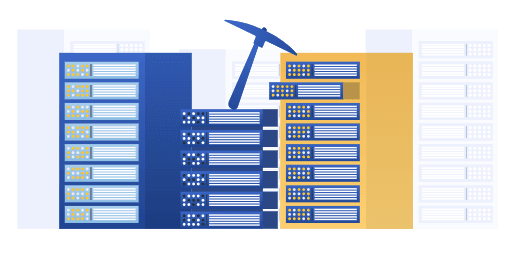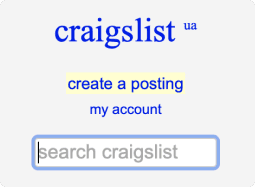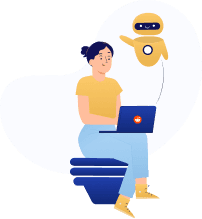Web Crawlers – Web Spiders Meaning, Types, Functions and Importance
Learn about web crawlers, how they work, what challenges
they may face and how they can benefit your business.
Learn more from DataOx.
Ask us to scrape the website and receive free data sample in XLSX, CSV, JSON or Google Sheet in 3 days
Scraping is the our field of expertise: we completed more than 800 scraping projects (including protected resources)
Table of contents
Estimated reading time: 9 minutes
Introduction
In the age of big data, almost every business decision is based on information gathered from various sources. The point is: data-driven decisions build a robust marketing strategy and help you stay competitive in the market. To find and extract required data, we need a powerful tool known as a web crawler.
In this article, we’ll find out what a web crawler is, how to use it, how to take advantage of web crawling, and more. Let's begin!
What is a Web Crawler?
Description
A web crawler is a program that systematically browses through sites and gathers information based on preliminary instructions.

Concept
The “web crawler” comes from the term “crawling,” which is an automated way of accessing a page and getting data by using a software program. Search engines use crawlers to browse the internet and index pages to meet search queries.
Synonyms
A web crawler is also known as a spider, spider bot, crawling agent, or search engine bot.
How a Web Crawler Works
A web crawler crawls through the internet by following specific links to download and store content for further extraction. The crawler starts with a list of specific URLs, and after crawling these pages, it detects new URLs to crawl.
This can be an endless process, which is why it is necessary to set up specific rules like what kind of sites to crawl, when to crawl for updated or similar content, and so on. Ultimately, the content that a spider gathers should be based on primary instructions as an algorithm.
Web Crawler Algorithm
- Start with original URLs, which are called seeds.
- Visit these URLs and retrieve essential content.
- Identify additional hyperlinks from the visited page.
- Add new links to the queue, which is called the crawler frontier.
- Visit the links from the crawler frontier.

Roadblocks for Crawlers
Sometimes search engine bots are blocked to protect sensitive or irrelevant pages from being ranked in SERPs. One of these roadblocks is a noindex meta tag, which is used to stop search engines from indexing and ranking the page. Another obstacle is the robots.txt file, which is used to prevent sites from overloading. Though some spiders can not comply with robots.txt files, they are used to manage or control crawling budgets.
Examples of Crawlers
What are some examples of web crawlers? The most popular is Googlebot, the main searching agent of Google’s search engine. It is used for both desktop and mobile crawling. Usually, search engines are not limited to one search bot; there are often several small bots with specific requirements that accompany the main bot.
Here is a list of crawling agents you may encounter:
- Bingbot
- Slurp Bot
- Baiduspider
- Yandex Bot
- Exabot
- Alexa Crawler
Must-Have Features for a Web Crawler
The usability of web crawlers may differ, and the choice should be made based on your requirements. Still, only a few can be effective in the data industry, as the job of spiders is not easy. Here are the major qualities that a productive crawling agent should have:
Architecture
Two basic requirements for any data crawler are efficiency and speed, which should be provided by a well-defined architecture. Here, a Gearman Model comes into the picture. This model comprises a supervisor crawler and worker crawlers — supervisors manage workers tackling the same link to speed up data crawling per link. Beyond speed, the system should prevent any loss of data, so a backup storage system for all supervisors is mandatory. This, in turn, provides efficiency and reliability.
Smart re-crawling
Smart re-crawling is essential for efficient web crawling, because the required content may have a different frequency of being updated. So, when you get the information from one website, after a while you can get the same information from another one. This is a waste of your time and resources. That’s why you need smart adaptive crawling when the crawling agent detects pages that are updated more frequently.
Scalability
Another key factor of productive web crawling is scalability. Because of regularly increasing amounts of data, the crawling system needs appropriate storage and extensibility. If we consider that each page may have over 100 links with 350KB data per page — multiplying that by over 400 billion pages — you will need to store 140 petabytes of data per crawl. Therefore, it is necessary to either compress the data before storing it or practice storage scalability.
Language-independence
Multilingual support of your data crawling system is another important factor. While English is the prevalent language across the net, data in other languages has its place. Thus, having multilingual support will enable you to get business insights from all over the world regardless of the language used.
Courtesy
To avoid DoS attacks, it is critical to use a properly structured data crawler. This will help you overcome restrictions that are used on some pages to prevent server overload. Any self-respecting crawling bot must also respect privacy and crawling restrictions.
Application of Web Crawlers
Crawling tools have many applications.
Let’s consider some of them.

Search engine spiders
Spiders make searching the Internet easy and effective. Search engines use these bots to extract data from websites and index them to detect the most suitable results.
Corporate crawlers
Much like search engine bots, corporate search bots index content that is unavailable to regular visitors. For example, many companies have internal pages for their content, and the spider's sphere of action is limited to its local environment.
Dedicated crawlers
There are also specialized applications for spiders — for example, it is sometimes necessary to archive content or generate statistical data. The crawler scans the page and detects the content to be saved for long periods. A statistical spider can identify specific content, determine how many and what kind of web servers are running, and other statistical data. Another very important type of crawler is ensures the HTML code is correct.
Web crawlers to analyze emails
Crawlers for email analysis can look up email addresses. Thanks to them, we get a huge number of spam emails every day.
Web Crawling Challenges and Issues
With the growing demand for data crawling, certain challenges are becoming more and more prevalent. To better understand these issues, let’s go through some of them.
Crawlability
There are sites that restrict the amount of extracted data with a robots.txt file. Thus, before crawling any website, it is necessary to check whether you can use your bots for data crawling.
Lack of uniformity
To crawl data in a comprehensible format can be challenging because of the non-uniform structure — especially when spiders need to extract data from over a thousand pages with a specific structure.
Freshness
Blogs or news agencies refresh their content on an hourly basis, and search bots need to access all this content to provide users with that updated information. This can cause unnecessary pressure on internet traffic and crawled sites. The solution is to crawl only frequently updated content and use multiple spiders.
Network bandwidth
The high consumption rate of network capacity is another challenge for web spiders, especially when crawling many inapplicable pages. Also, if a spider frequently visits a page, it may affect the performance of the web server performance may be effected.
Deficiency of context
While crawling, spiders mainly focus on a specific topic, and may not find the required content, even after downloading many irrelevant pages. To solve this issue, it is necessary to identify some crawling techniques that focus on relevant content.
Existence of AJAX elements
Despite the fact that interactive web components and AJAX have made sites more simple, spiders don’t really benefit. It is difficult to crawl the content from AJAX-based web sources because of their dynamic behavior. As a result, such pages are not usually visible to search agents.
Anti-scraping services
ScrapeSentry and ScrapeShiel are famous services that can differentiate web robots from humans. These tools restrict crawlers by using tactics like instant alerts, email obfuscation, or real-time monitoring.
Real-time crawling
Another challenge is getting data in real-time. This is required when you need to crawl data in real-time to predict and report possible incidents.
How Web Crawlers Can Benefit your Business
On the whole, crawlers have been created for search engines to index pages and deliver users the results they’re looking for. But there are many business applications for crawling agents. Here are some ways that businesses may take advantage of web crawling.
e-Commerce
Web crawling is a critical tool for doing business in e-Commerce. Information about products, descriptions, images, prices, and reviews enables you to practice real-time monitoring not only of the market but also of competitors.

A web spider can monitor social media, news pages, and other forums to obtain information about consumer opinions of you and your competitors. This kind of data is invaluable to your marketing and sales strategy.
Lead generation
The most important need for lead generation is collecting information. Relevant information about your potential customers will provide you with the most qualified leads.
Competitive analysis
For solid competitive analysis, crawling is one of the best tools. You can collect all possible information about your competitors, from new products to promotions to pricing, thus making the necessary analysis.
Target data
Let's say you are planning a big event related to real estate, and you need to reach out to all the players in this market. You can set up a crawler to do entity extractions by visiting target websites to gather contact names, emails, phone numbers, and similar information.
Supplier monitoring
Purchasing products from different suppliers require a pricing and offerings comparison. That's why crawling agents may help you monitor your suppliers by collecting comprehensive data and ensuring the best deals.
Web Crawling in Data Mining
Since you already know the meaning of web crawling, it’s time to understand how it can be connected with data mining. When the crawling agent collects data from online sources, this raw data is presented in an unstructured form, particularly in JSON or XML formats.

Afterward, it is necessary to take useful insights from the collected data. This process is referred to as data mining. And it just so happens that web crawling is the initial step of data mining.
The Importance of Web Crawlers for SEO
SEO is the main tool you can use to enhance your website and gain better rankings. For this reason, your page should be reachable by search engine robots. Crawling is the main method that search engines use to index your pages, and regular crawling enables you to index changes and make sure your content is fresh.
Since crawling is the foundation of any SEO campaign, web crawler behavior can be considered an effective measure to increase traffic and rankings in SERPs, all while providing a better user experience.
Questions and Answers about Web Crawlers
What are crawlers?
Web crawlers are programs that are searching content on the Internet. Crawlers are also called spiders or spider bots for their way of finding new information using links from one page to another. Search engines like Google use crawlers to discover new websites, learn their structure and get data about their content for indexing.
How do web crawlers work?
Crawlers go from one page to another using on-page links and gather the necessary information about those pages. In the case of search engine bots, they start scanning it when you submit your new website for indexing or get a link from another website, which is already indexed. As soon as a search bot visits your homepage, it scans it for content and link, then follow these links to other pages of your websites and external sites and, therefore, discovers new pages. It is important to use appropriate robots.txt as this document contains directives respected by some bots.
What are the types of web crawlers?
You can classify crawlers according to their nature, goal, and algorithms. According to the device, there can be mobile and desktop bots. According to their algorithm and approach to scanning, there are structure-based, learning-based, context-based, and priority-based crawlers.
Conclusion
Now that you know what a web crawler is, you can imagine how it may be important for data collection. With a web spider, you can crawl your competitors' pages and gather valuable insights to be more competitive in the market, or use them to boost your website’s ranking in SERPs.
Crawling data from online sources is not an easy process and comes with many challenges. The DataOx team is always ready to provide you with outstanding solutions. Just schedule a free consultation with our expert and stay tuned!
Publishing date: Sun Apr 23 2023
Last update date: Wed Apr 19 2023




